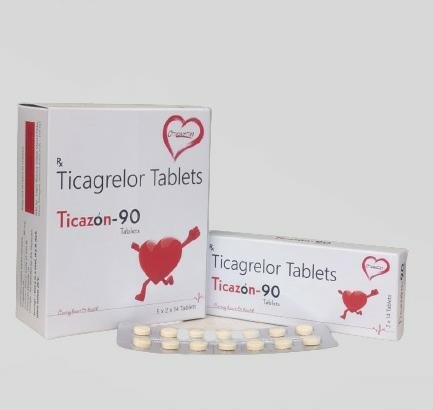Losartan Potassium 50mg Hydrochlorothiazide 12.5mg Tablet

Brand Name : Z-SAR-H
Composition : Losartan Potassium 50mg Hydrochlorothiazide 12.5mg Tablet
Packing Type : 10x10
Product Price : Rs. 590
Losartan Potassium and Hydrochlorothiazide is a combination of Losartan Potassium and Hydrochlorothiazide, which lowers blood pressure effectively. It helps in reducing the pressure on the heart and initiates protection from heart strokes. This is an anti-hypertensives that primarily focuses on the treatment of Hypertension which is a chronic problem. If not treated well it may offer a sudden release of force on the batteries of the heart.
The salts used are Losartan Potassium and Hydrochlorothiazide belong to the different categories. The entire combination helps in reducing blood pressure. Losartan is an angiotensin receptor blocker (ARB). It works by blocking the hormone angiotensin thereby relaxing blood vessels. This allows the blood to flow more smoothly and the heart to pump more efficiently. Hydrochlorothiazide is a diuretic that removes extra water and certain electrolytes from the body. Over time it also relaxes blood vessels and improves blood flow. Both of these prevent heart strokes and reduce the overload of fluid in the heart called oedema.
There are some necessary precautions which are needed to be followed with the use of this Losartan Potassium and Hydrochlorothiazide. There are certain recommended guidelines that prevent the occurrence of unwanted side effects. The important precaution is, to take the salt as per the doctor’s recommendation. Try to avoid any other medication within the combination. The use of caffeine and alcohol is prohibited. The generalizing side effects which can cause health issues are nausea, vomiting, digestive issues, coughing, etc. This is not recommended for pregnant women and children.
Indications for Losartan Potassium and Hydrochlorothiazide Salt
The salt may is needed to be taken under the following conditions,
• congestive heart failure
• hepatic cirrhosis
• nephrotic syndrome
• chronic renal failure
• acute glomerulonephritis
• corticosteroid
Dosage- The salt Losartan Potassium and Hydrochlorothiazide intake has to be directed by the physician.
Mechanism of Losarta2n Potassium and Hydrochlorothiazide Salt
Losartan Potassium
Losartan reversibly and competitively prevents angiotensin II binding to the AT1 receptor in tissues like vascular smooth muscle and the adrenal gland. Losartan and its active metabolite bind the AT1 receptor with 1000 times more affinity than they attach to the AT2 receptor. Losartan's prevention of angiotensin II binding causes vascular smooth muscle relaxation, lowering blood pressure. Angiotensin II would otherwise attach to the AT1 receptor and induce vasoconstriction, raising blood pressure.
Hydrochlorothiazide
Hydrochlorothiazide prevents sodium and water reabsorption from the distal convoluted tubule, allowing for the increased elimination of water in the urine. Hydrochlorothiazide should be used cautiously in patients with reduced kidney or liver function.
Contraindication of Losartan Potassium and Hydrochlorothiazide Salt
Here are some side effects of the salt.
• Sleepiness
• Diarrhea
• Electrolyte imbalance
• Increased blood uric acid
• Glucose intolerance
• Dizziness
Precautions With Losartan Potassium and Hydrochlorothiazide Salt
The necessary precaution with the use of this salt is mentioned below.
• Pregnant and lactation
• Low blood pressure (hypotension) Using this drug may cause low blood pressure
• Sensitivity reaction
• Eye problems
• Allergy warning
• Alcohol interaction warning
• Warnings for people with certain health conditions
Storage- Keep the Losartan Potassium and Hydrochlorothiazide salt stored in a cool and dry place with no contact with sunlight.
Note- Losartan Potassium and Hydrochlorothiazide salt is only for external use.
Address
SCO 5-6, Zirakpur-Panchkula-Kalka Hwy, near Hotel Sunpark, Wadhawa Nagar, Dhakoli, Zirakpur, Punjab 140603
Contact No.
+91-7087571536
Email
arlakcorazon@gmail.com



